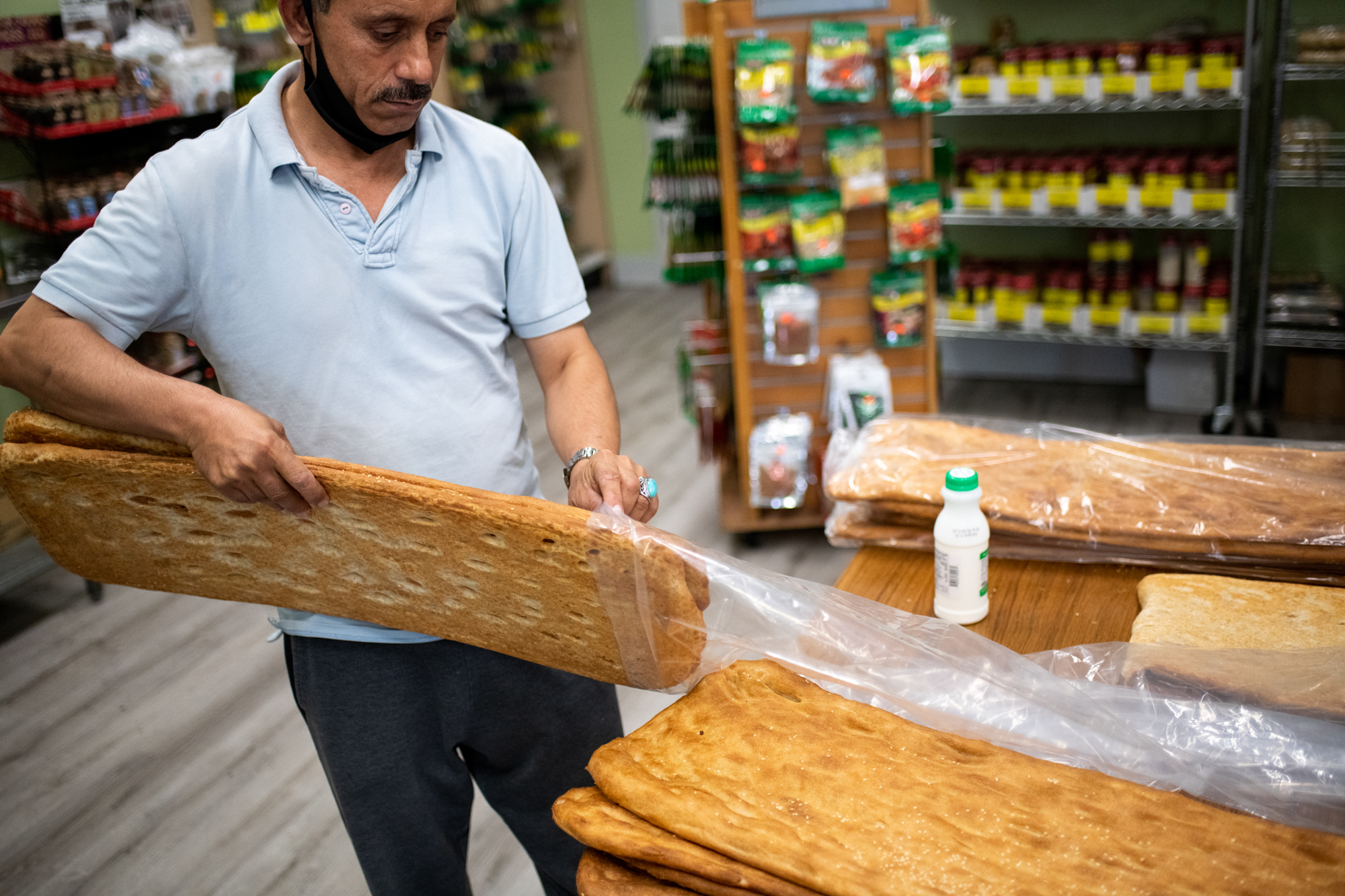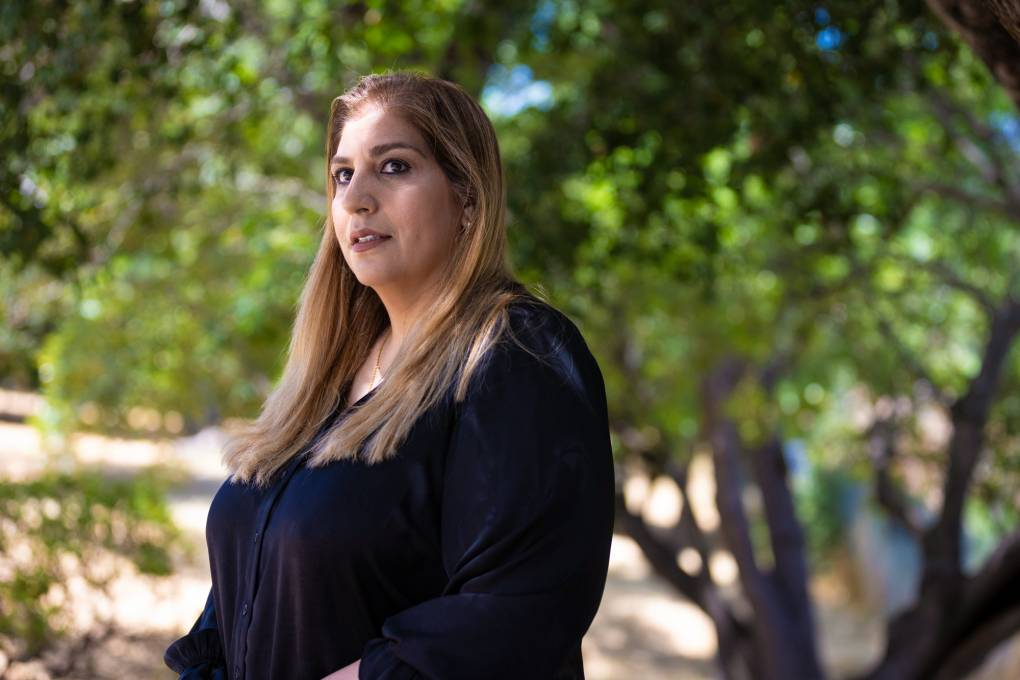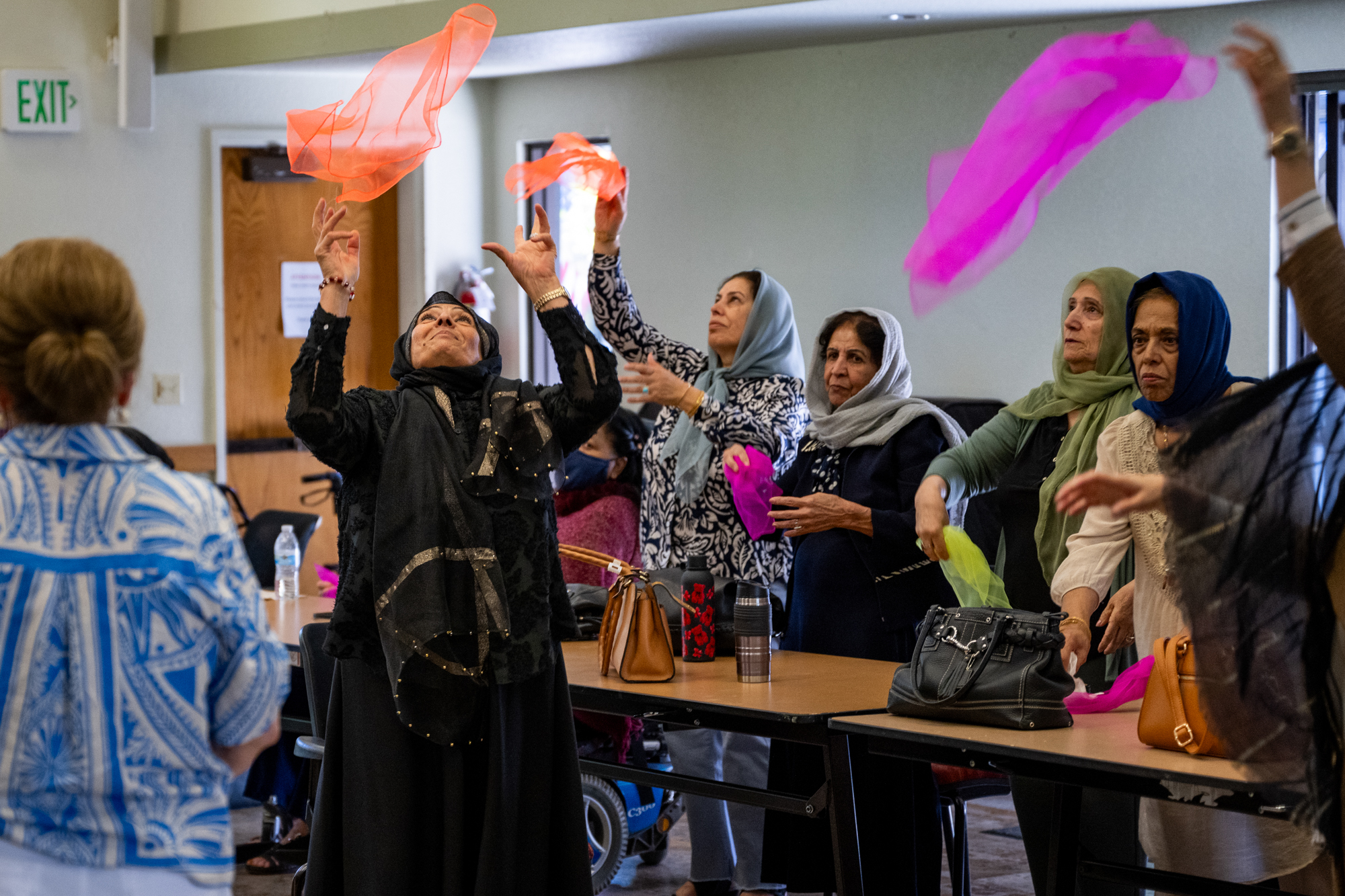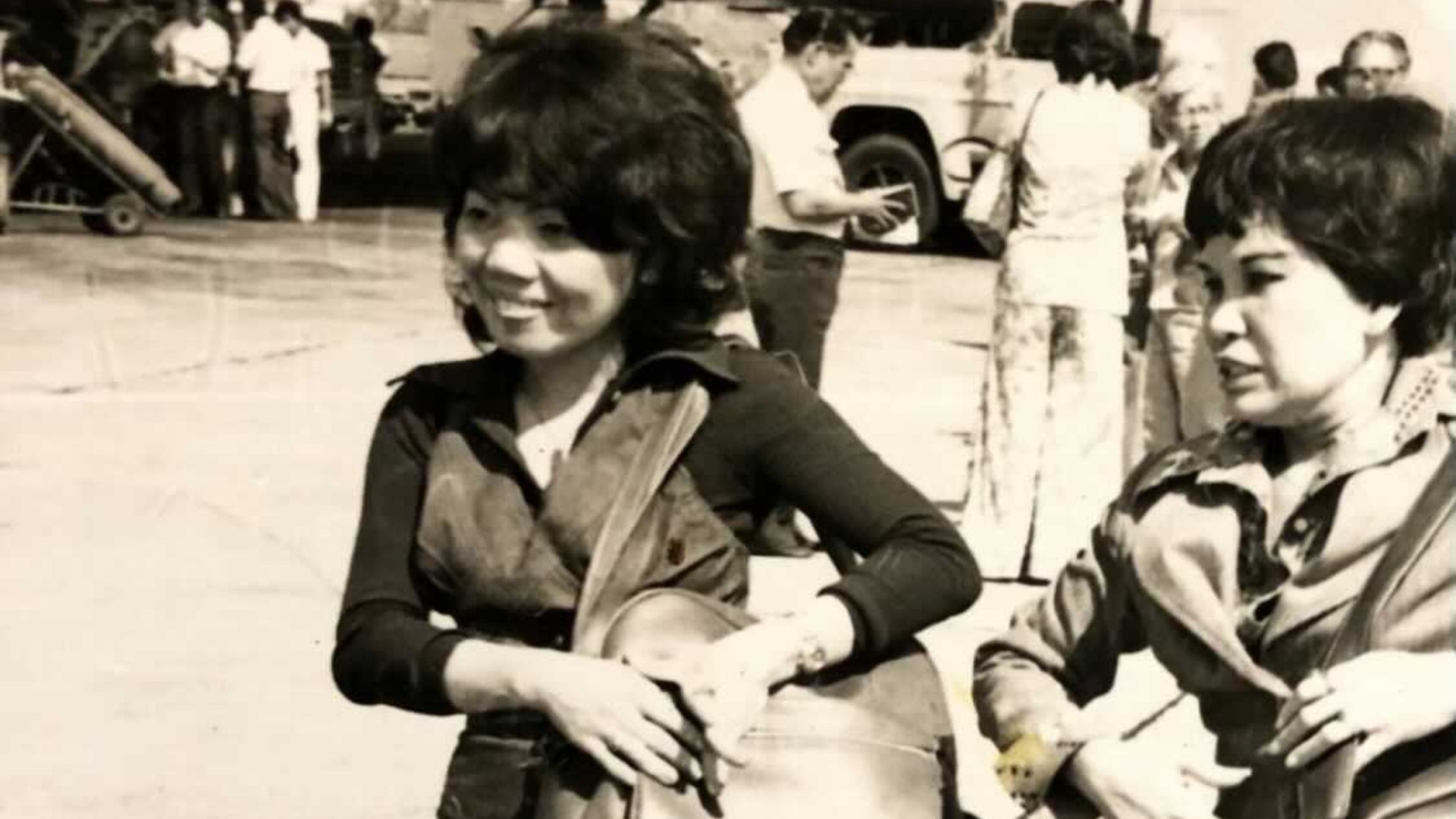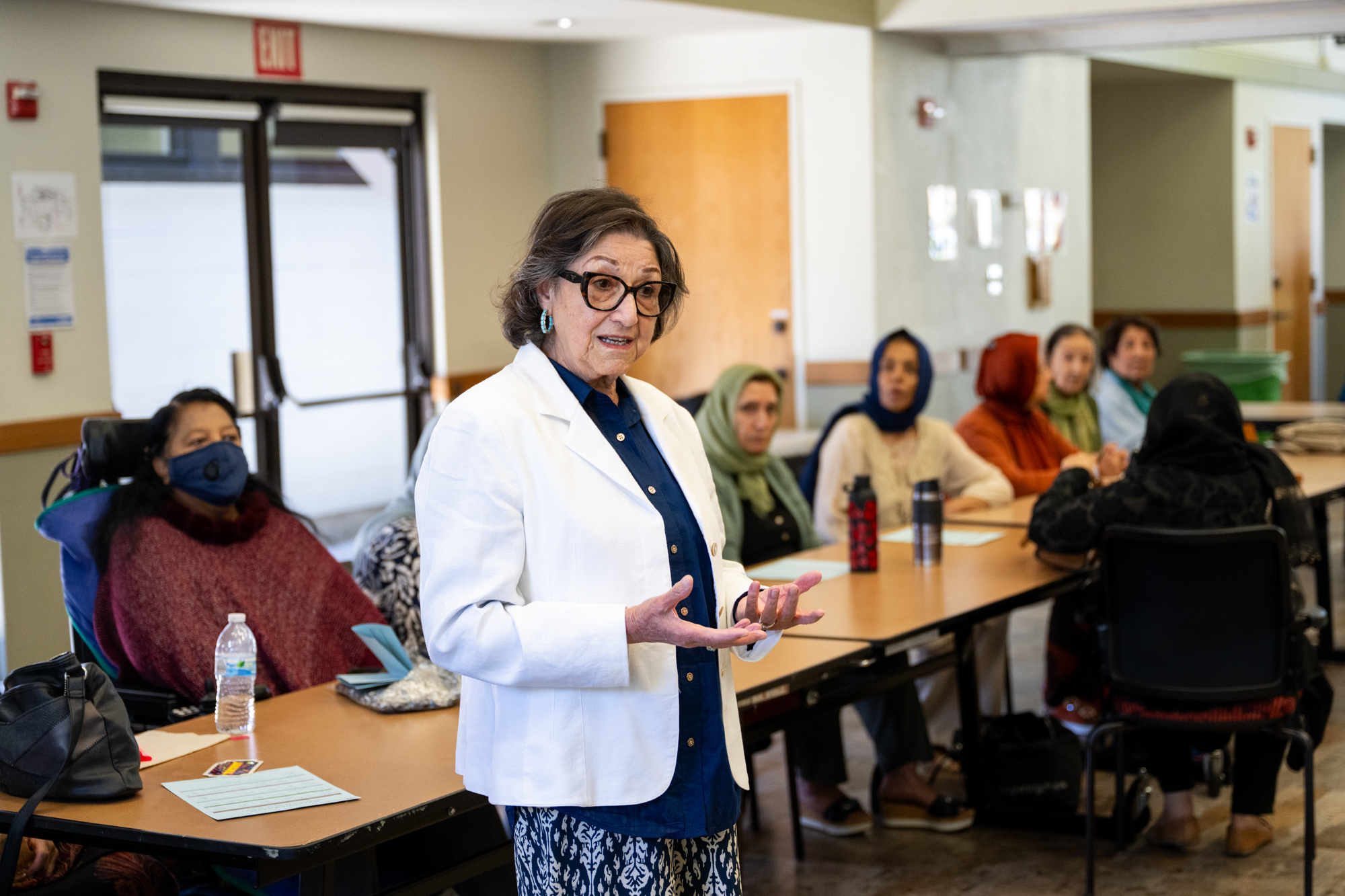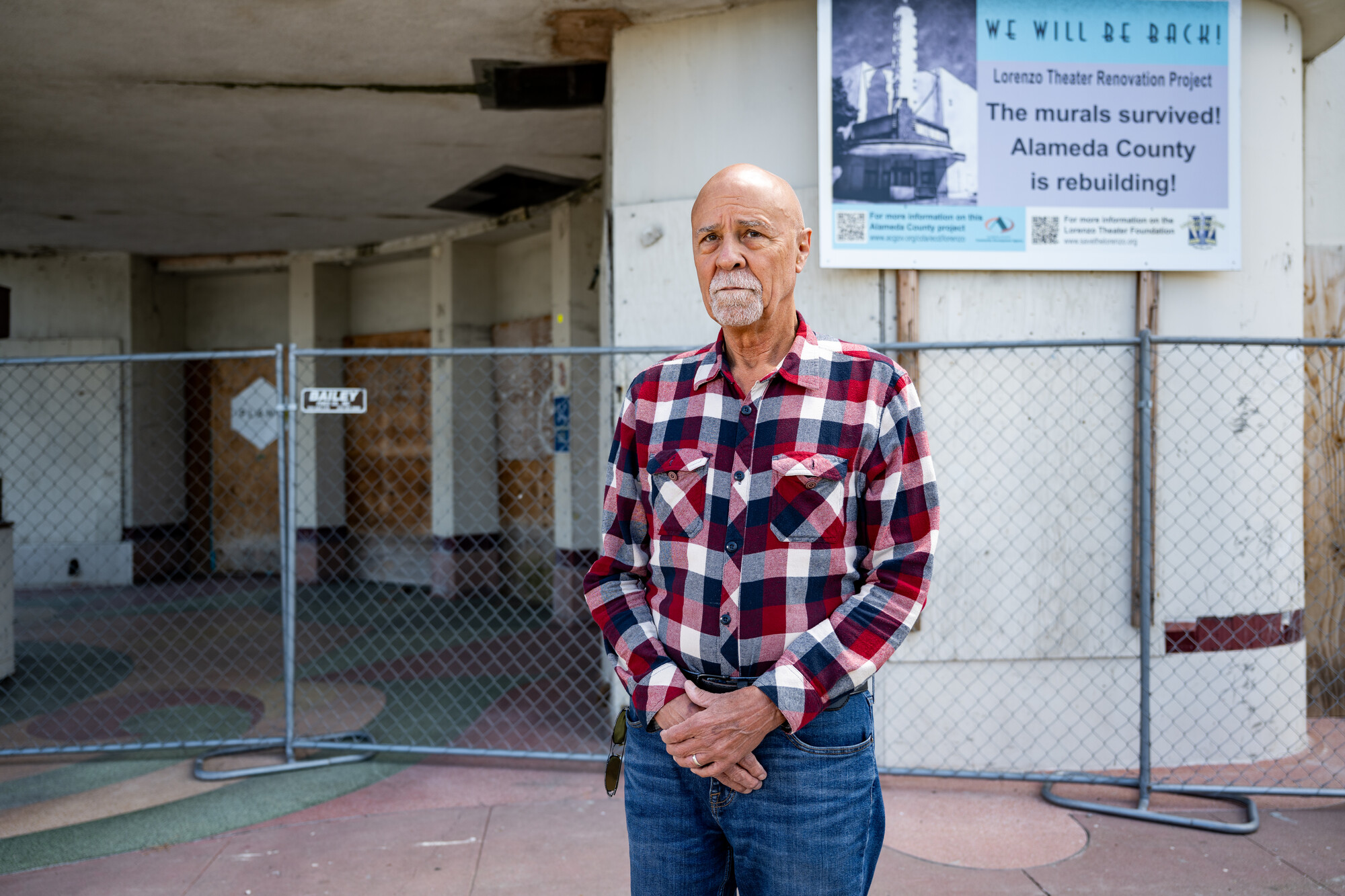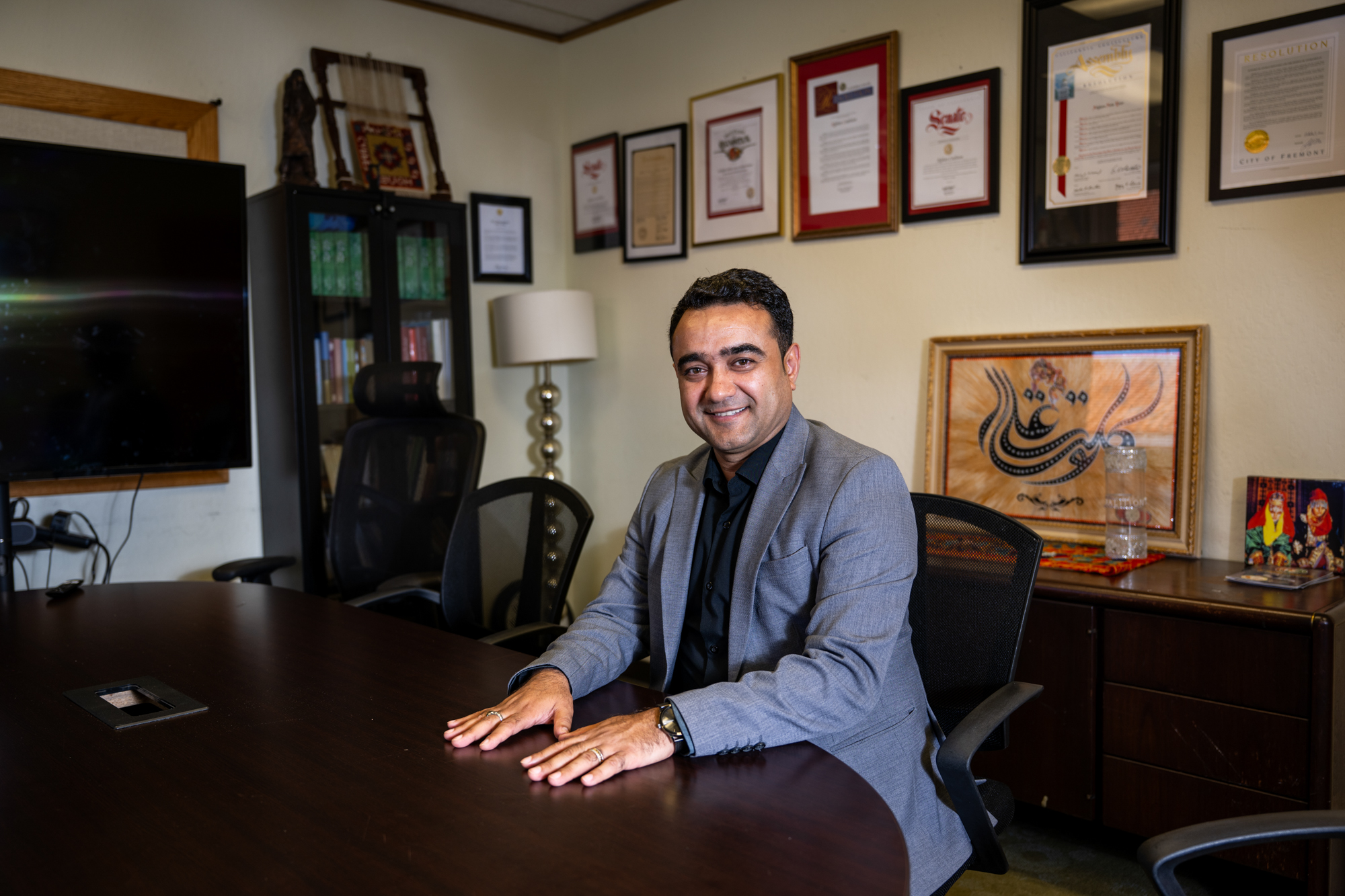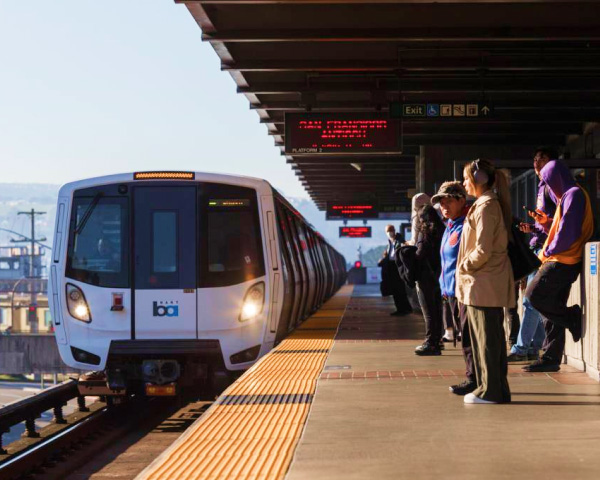Episode Transcript
This is a computer-generated transcript. While our team has reviewed it, there may be errors.
Katrina Schwartz: Fremont is the fourth-largest town in the Bay Area, but it doesn’t always get the love it deserves. It’s a quiet place, but has a thriving tech industry, an incredibly diverse population and played an important role in the early silent film industry. It’s also home to one of the largest Afghan populations in the country…a fact that often shows up in pop culture.
Clip from Fremont: Do you live in Fremont? Are you also from Afghanistan? Yes, I am. On the Special Immigration Visa? Yes. I was a translator in Afghanistan.
Katrina Schwartz: That’s a clip from the 2023 indie film “Fremont” about a military translator starting over in Fremont after being forced to leave Afghanistan.
It’s a premise rooted in reality. Over the past 40-some years, Fremont’s Afghans have slowly built a cultural hub here. There’s even a business district known as Little Kabul.
That name, Little Kabul, sparked the interest of one Bay Curious listener who wanted to know more about how Fremont became home to so many Afghans.
Today on Bay Curious, we’re tracing four distinct waves of Afghan immigration to the U.S. and illuminating how 40 years of U.S. foreign policy have led us to this point. We’ll meet Afghan refugees who’ve settled here, learn what makes this community unique and dig into some of the challenges they face.
I’m Katrina Schwartz, filling in for Olivia Allen-Price. Stay with us.
Sponsor message
Katrina Schwartz: Northern California is home to the largest concentration of Afghans in the United States. And many have settled in the Bay Area city of Fremont. Reporter Asal Ehsanipour went to find out why so many folks have decided to make this East Bay town home.
Asal Ehsanipour: Recently, I went to an Eid dinner to celebrate the end of Ramadan.
Masoud Juya: We have, of course, the delicious kabuli pulao, which is a very common Afghan dish.
Asal Ehsanipour: Tables piled with plates of homemade rice and pastries made by local Afghans.
Masoud Juya: This is called simion. It’s a very popular dried fruit, usually during Eid, it is used in Afghanistan.
Asal Ehsanipour: Guiding me on this food tour is Dr. Masoud Juya, the associate director of a local nonprofit called the Afghan Coalition.
Masoud Juya: We have come here today to celebrate Eid and also to enjoy the Afghan culture, food, music. And to kind of enhance our collegiality, you know, over the joy and feast of Eid.
Asal Ehsanipour: Roughly 66,000 people of Afghan descent live in California, according to the 2019 Census. And historically, the highest concentration has been right here in Fremont. Making it one of the largest Afghan communities in the country.
Masoud Juya: Fremont was like a magnet for Afghans to come and join this beautiful city. And one reason that it’s a big attractive factor for Afghans is definitely this landscape, the beauty, the geography, and the weather.
Asal Ehsanipour: It doesn’t hurt that the East Bay has these majestic hills, which remind Afghans of home.
Masoud Juya: When you see these hills, it’s really reminiscent of those beautiful memories.
Asal Ehsanipour: Fremont’s Afghan community has been growing for decades. Masoud says you can break it down into four – distinct waves, each based on a moment of conflict and political change in Afghanistan.
The first wave of immigration began in the late 1970s when the USSR invaded Afghanistan and took control of Kabul.
News Clip: In 1979, the Soviet Union determined that Afghanistan would be a communist nation … forever.
Asal Ehsanipour: The Soviet invasion and the U.S. decision to arm rebel groups within Afghanistan as part of a proxy Cold War kicked off decades of instability for Afghanistan. Millions were killed. And millions more fled as refugees.
News Clip: In that decade of war, over 1,000 villages and towns have been destroyed by tanks and bombs.
Masoud Juya: The immigrants from that era were those who were persecuted by the communist regime.
Asal Ehsanipour: They included religious minorities and people who’d held government jobs.
Masoud Juya: As well as civilians, ordinary civilians who did not feel safe to stay in the country.
Asal Ehsanipour: Many Afghans fled to neighboring countries, like Iran and Pakistan. Others came to America.
Masoud Juya: Some of them ended up in Virginia first, and then they knew somebody who had recently come to this part of the country, and they were satisfied. So then they talked together and they decided to join each other here.
Asal Ehsanipour: Like so many immigrant communities, Afghans came to California because that’s where they knew people. If entire families were to uproot their lives and move across the world, they needed to stick together.
At a weekly health event put on by the Afghan Elderly Association, women I met said they’d followed family members who’d come to Fremont for work or school.
Woman 1: My daughter, she went to San José State.
Woman 2: Aunts and uncle.
Woman 3: My friend, my relative.
Woman 2: Everybody was here in Fremont, so I came to join them, join the group.
Asal Ehsanipour: Hanifa Sai Tokhi came to the Bay Area 47 years ago. But she still feels the pain of leaving Afghanistan.
Hanifa Sai Tokhi: I was crying for two and a half years. We didn’t come by our choice. We were forced to leave the country.
Asal Ehsanipour: Hanifa’s husband had worked for the Afghan government before the Soviet invasion. One day, they heard a knock at the door.
Hanifa Sai Tokhi: They sent the notices that they’re going to arrest him and put him in jail. And even they told him to be ready when the soldiers come, go with them.
Asal Ehsanipour: With just $1,000 to their names, Hanifa, her husband, and their two small children made their way to the Bay Area. Hanifa had a brother-in-law in San Jose.
Hanifa Sai Tokhi: By the time we came, we had $22 because most of the money was spent.
Asal Ehsanipour: Hanifa says life was hard. They struggled to pay the mortgage, sometimes went without electricity. Eventually, she and her husband got political asylum and work permits, applied for jobs in the early days of Silicon Valley.
Hanifa Sai Tokhi: But then, there is not a lot of people coming to San Jose, but mostly was coming to Fremont.
Asal Ehsanipour: Almost immediately, Fremont became the center of Afghan life. Grocery stores like Maiwand Market sold tastes of home. And immigrants opened mosques, rug stores, and Halal butcher shops. And the City of Fremont supported them. It offered grants to help Afghan business owners get started.
Masoud Juya: Slowly, it started to get built. Until this city was called Little Kabul, which is a very attractive name.
Asal Ehsanipour: Masoud Juya says Fremont was more affordable than bigger cities like San Francisco or Oakland. Plus, California had generous welfare benefits that helped people get resettled here.
So, Afghans trickled into Fremont throughout the 1980s until the next big wave of immigration a decade later.
Masoud Juya: The second wave actually was in the 1990s, when Afghanistan was experiencing a civil war.
News clip: The Shiite Southwest District of Kabul begin the latest battlefield in the fight to control Afghanistan’s capital.
Asal Ehsanipour: The civil war was between different ethnic groups in Afghanistan and resulted in the Taliban’s rise to power.
Masoud remembers how tumultuous and disruptive that time was.
Masoud Juya: I was actually in the primary school, and the war was terrible.
News clip: Rebels reportedly fired hundreds of rockets in the residential area.
Masoud Juya: A lot of homes were destroyed due to the civil war, and our home was no exception. So every Afghan was doing their best to get out of the country.
Asal Ehsanipour: Again, many Afghans came to the U.S.
Masoud Juya: When they ended up here, then the first question they asked was like, OK, which state has more Afghans? Let’s go and join our communities there.
Asal Ehsanipour: When the second wave of immigrants got to Fremont, the first wave was ready to help them get settled. That’s how Masoud’s organization, the Afghan Coalition, was founded in 1996. Since then, they’ve offered social services to Afghan refugees, helping them find housing, jobs, and mental health support.
And it was around the time the Afghan Elderly Association started its work. The founders went door to door individually recruiting each member.
Hanifa Sai Tokhi: I was working with this association for 16 years.
Asal Ehsanipour: Here’s Hanifa Sai Tokhi again. After leaving Afghanistan during the Soviet Invasion, she eventually became a health promoter for the Afghan Elderly Association. Her job was to bring culturally appropriate health services to older community members.
Hanifa Sai Tokhi: We were going with these ladies to advocate to the doctors and translate. Like sometimes they cannot read English, and we would ask what is this medicine for?
Asal Ehsanipour: But the organization knew that healthy living wasn’t just about medication and doctor’s visits. There needed to be a social element. So, they created the Healthy Aging Program. And, it still exists!
Hanifa Sai Tokhi: They brought these ladies out of isolation.
Asal Ehsanipour: Here, each week, they offer a hot meal, exercise classes and medical check-ups from Afghan nurses who speak Farsi.
Hanifa Sai Tokhi: And also, there is some gossip, too. I have to have gossip.
Asal Ehsanipour: Programs like this created more opportunities for immigrants to feel comfortable and connected when they got to Fremont. And for years, the city of Fremont’s Human Services Department collaborated with the Afghan Elderly Association. They provided staffing support, along with office and meeting spaces.
And so with that second wave, the Afghan community was growing. Thriving in a Fremont bubble, until the 9/11 attacks put the international spotlight back on Afghanistan.
News clip: We have a very tragic alert for you right now. An incredible plane crash into the World Trade Center here at the lower tip of Manhattan.
George W. Bush: On my orders, the United States military has begun strikes against al-Qaeda terrorist training camps and military installations of the Taliban regime and Afghanistan.
Masoud Juya: The Taliban government was toppled post-9/11, and a new administration was built in Afghanistan.
Asal Ehsanipour: With the new government came a new constitution. It meant an end to the Taliban’s religious extremism, opportunities for women to work, and girls to get an education.
Masoud Juya: So this was the beginning of a big change for Afghanistan. It was the first time after all those dark periods that Afghanistan was connected to the rest of the world.
Asal Ehsanipour: Rather than needing to flee as refugees, people could finally come to the U.S. on cultural exchange programs or to study. But when they got here, they were faced with a very Islamophobic America.
Masoud Juya: When there is maybe an added layer of difficulty because of stigma, discrimination, or whatsoever, this in itself is also another factor that might motivate community members to come together so that they prevent themselves from additional threats or risks.
Asal Ehsanipour: Masoud first came to the U.S. during this third wave after the fall of the Taliban. He wanted to learn as much as he could and bring that knowledge back to Afghanistan.
Masoud Juya: We put into practice pretty much every bit of information we learned here. And we were really, in our own sense, we were really revolutionists in terms of helping Afghanistan develop.
Asal Ehsanipour: Inspired by his time in the States, he opened a successful university and a health science institute.
Masoud Juya: And that’s why people like me were always staying there until we really had to leave post-2021.
Asal Ehsanipour: 2021, when the United States withdrew from Afghanistan.
Joe Biden: I concluded it’s time to end America’s longest war. It’s time for American troops to come home.
Asal Ehsanipour: The Taliban took back control of the country.
News clip: The Taliban advance appears unstoppable. Ruthless as ever, to those who stand in their way.
Asal Ehsanipour: This U.S. policy decision caused the fourth and most recent wave of immigration.
News clip: Now the Taliban is back, anyone who worked for the Afghan government has fled or is in hiding. Women and girls live in fear.
Asal Ehsanipour: Masoud was also afraid. He had been at the forefront of trying to rebuild a more liberal, democratic Afghanistan. But now, all of that was smoke.
Masoud Juya: I was fighting hard as a member of my community against extremism. So I was really at high risk, and I had to leave as soon as I could.
Asal Ehsanipour: Masoud explored every avenue and eventually got out through an American Ph.D. program.
Masoud Juya: But after I completed my Ph.D., then I was thinking of staying somewhere for a stable life.
Asal Ehsanipour: The obvious choice: Fremont. Masoud is one of roughly 10,000 Afghans who ended up in California after the 2021 withdrawal. And this time, the refugees came from all parts of Afghan society.
Masoud Juya: The fourth wave is actually a very, very different group of people: vocalists, musicians, academics.
Asal Ehsanipour: Journalists and human rights advocates, too.
Masoud Juya: More importantly, people who really worked with the Afghan government and the U.S. Government.
Asal Ehsanipour: Including members of the U.S. military and allied forces.
Masoud Juya: But then there were also some civilians who just went to the airport because they are also afraid.
Asal Ehsanipour: You might remember news footage of desperate Afghans sprinting after U.S. military planes trying to get onboard. Some even held onto the wings as the planes took off.
Masoud Juya: People who were really scared of their lives.
Asal Ehsanipour: As these horrific scenes unfolded, the city of Fremont again stepped up to support the Afghan community. It raised $485,000 for an Afghan Refugee Help Fund … to help pay for things like filing immigration documents, temporary housing, mental health resources, and driving lessons for recent arrivals. This was done in collaboration with Afghan organizations and businesses. As ever, those who had already established themselves mobilized to help newcomers. And new immigrants leveraged what earlier waves had built.
Masoud Juya: Yeah, all these resources that Afghans created, institutions that they built, connections that they had, the knowledge that they have from navigating the U.S. System, I think they were all transferred into the new waves.
Asal Ehsanipour: When Masoud got to Fremont, his expertise building institutions in Afghanistan made him the perfect guy for a job at the Afghan Coalition, helping other refugees get settled. But he was one of the lucky few.
Masoud Juya: Afghans come here, and I see they were professionals back home. They come here, but they cannot find a professional job.
Asal Ehsanipour: This fourth wave is bigger than the prior ones. And people don’t have the skills to fit into the Bay Area’s high-tech, AI-driven economy.
Masoud Juya: So I see a lot of frustration for some of the young, talented Afghans.
Asal Ehsanipour: One of those young, talented Afghans is Hasib Sepand. He arrived in Fremont before the U.S. military withdrew from Afghanistan and started a music school, called The Sepand Academy … Just six months later, the Taliban came back to power.
Hasib Sepand: Nobody was interested in music, even myself. So, we were like mentally very depressed. I didn’t have that courage to play music. Because my family’s over there.
Asal Ehsanipour: Like Hasib, his family were musicians. And Hasib’s siblings had also worked with the American Army. Because of that, they were able to qualify for Special Immigrant Visas.
Hasib Sepand: And the last American plane that flew from Afghanistan included my family. It’s like a film.
Asal Ehsanipour: Hasib was so grateful his family made it to safety, he wanted to help other newcomers. With the city’s help, Hasib offered three months of free music classes to new arrivals. They sang and played instruments like the tabla and sitar. You’re hearing them play now.
Sounds of music class playing
Hasib Sepand: I tried to give a positive energy, especially for the newcomers, because they face a lot of problems. They face stress, depression, different culture, different language, sometimes no job.
Asal Ehsanipour: Hasib says before he came to Fremont — before he knew anything about how hard it would be to live in the U.S. — he thought it would be a more glamorous place.
Hasib Sepand: My Afghan friends, they used to tell me, “OK, so you are going to Fremont. Oh my god. That’s a dream city.” And they gave me kind of like wrong imagination.
Asal Ehsanipour: This was not the “America” Hasib had pictured. But as he’s watched the community come together to support one another, he’s come to love this place.
Hasib Sepand: Now, to me, it looks a hundred times better than every place in America because I live here and I have friends and I enjoy everything in Fremont.
Asal Ehsanipour: He says he loves the people, the fellowship created at local Afghan bakeries and banquet halls.
Hasib Sepand: Right now, I feel that I’m in Afghanistan. I’m in my hometown. Most of the time, I don’t speak English because everywhere I go is like Afghans. And when my friends come from Canada or from Europe, they are jealous. I love Fremont.
Asal Ehsanipour: Or as Hasib calls it: Little Kabul.
Katrina Schwartz: That was reporter Asal Ehsanipour.
Fremont’s Afghan community is under threat once again. President Trump recently announced plans to end temporary protected status for a host of countries, including Afghanistan. The administration also put a halt to most refugee resettlements programs.
The other big difficulty facing this community is cost of living in the Bay Area. More Afghans are choosing to settle in Sacramento than Fremont now because it’s more affordable.
As you may have heard, this is a perilous time for public media and KQED. So, if you have a moment, head on over to kqed dot org slash donate. Every little bit helps to support the shows you love, and we appreciate you so much.
Bay Curious is produced in San Francisco at member-supported KQED.
Our show is made by Gabriela Glueck, Christopher Beale and me, Katrina Schwartz.
With extra support from Maha Sanad, Katie Sprenger, Jen Chien and everyone on team KQED.
Some members of the KQED podcast team are represented by the Screen Actors Guild, American Federation of Television and Radio Artists. San Francisco Northern California Local.
Have a great week.

